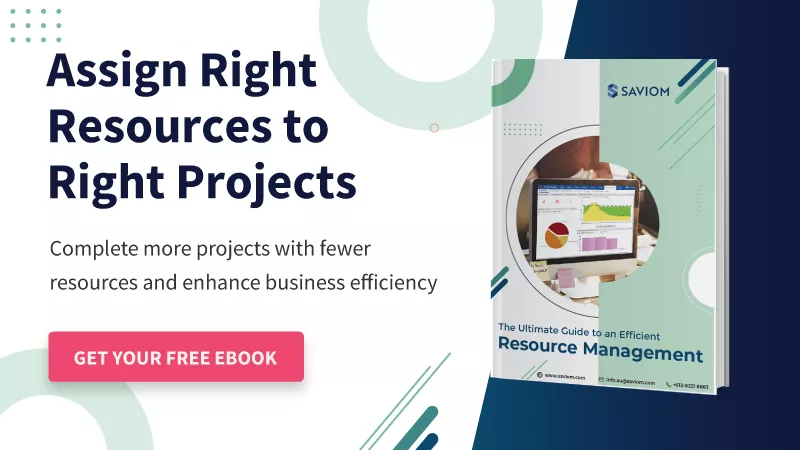“According to a survey, the professional service industry is projected to reach $7 billion in 2025 at a CAGR of 7%.”
The above survey attributed this growth to a stable business outlook, regulatory reforms, and improved financial reporting standards. Nonetheless, the professional service industry is also struggling with an onslaught of challenges despite its impressive growth. Some include economic uncertainties, outsourcing risks, security threats, and more.
Besides, resourcing challenges, such as skill shortages, attrition, and low billable utilization, adversely impact the financial health of the PSOs.
Therefore, professional service firms must proactively mitigate these resourcing challenges to remain competitive and profitable in the global market.
This blog sheds light on the most prevalent resourcing challenges in the professional service industry and how to counter them.
Let’s begin.
An overview of the professional service industry
Professional services firms offer specialized knowledge and expertise to help their clients grow and overcome specific business challenges. Companies seek these services when they do not have the requisite skill or expertise in-house. Examples of professional service firms include audit and accounting, advertising and marketing, legal services, and IT consultancy.
Professional service organizations primarily depend on their trained manpower to sustain their business. They leverage specialized resources to meet the expectations of their clientele. Therefore, they invest in robust talent management to effectively utilize highly qualified, experienced consultants.
Furthermore, PSOs provide their employees’ skills and knowledge on an assignment basis, where a specific team or resource is responsible for delivering the client’s service. Most often, professional service assignments are of a shorter duration, and consultants charge their customers on an hourly basis.
In addition, the PS firms emphasize on providing excellent customer service since most of the revenue is generated through recurring clients. Even though the revenue models in PSOs vary, many firms are transitioning to value-based pricing due to its proven record of higher ROI and better client retention rates.
Moreover, PS firms require low capital investment because they have lower overhead costs regarding equipment, facilities, and assets. Therefore, the combination of low capital intensity, capital investment, and good profit margins yield higher cash flow and lower debt for these companies.
Now that we know about the characteristic of the professional service industry, let’s learn about its resourcing challenges.
Ways to combat resourcing challenges in the professional service industry
To effectively leverage the expertise of skilled consultants, professional service firms must be tactical in resolving resource-related bottlenecks.
Enlisted below are some of the significant resourcing challenges within this industry and the ways to mitigate them:
Shortage of consultants during seasonal peaks
Most professional service firms undergo seasonal variations. Let’s take the example of audit and accounting firms that witness a surge in demand during the financial year’s end. Accountants and auditors face additional work pressure because they have to prepare year-end tax filings and certify balance sheets while also managing the inflow of new clients.
If managers cannot foresee the pipeline projects in advance, it becomes a challenge to identify and allocate competent consultants to various project tasks. Moreover, the mismatch between supply and demand during the seasonal peak causes a shortage of consultants leading to last-minute firefighting, cost escalations, and project delays.
So, how can you combat this?
Solution: Foresee and bridge capacity vs. demand gap in advance
To tackle the shortage of consultants during demand peaks, managers can use comprehensive ERM software to get adequate foresight into the pipeline project demand. With the help of capacity vs. demand reports, managers can identify the gap between demand and supply and take proper actions to mitigate it.
For shortfall of resources, managers can administer appropriate upskilling and retraining programs. They can also out-rotate niche consultants from ongoing projects and allocate them to new activities. Lastly, they can use a contingent workforce to meet the short-term demands during seasonal peaks. Therefore, forecasting and bridging the gap eliminates the chances of last-minute hiring of consultants.
Read More: Benefits of Capacity Planning in Professional Services Companies
Higher cost rates of senior consultants
PSOs harness the expertise of niche skilled and senior consultants to offer superior customer experience to their clients. But, due to the rarity of their skills and industry experience, their cost rate is higher than their junior counterparts. For instance, on an average, the estimated pay for a professional service senior consultant in the US is $159,551 per year.
Therefore, allocating these senior resources to low-billable projects can reduce their profitability and lead to revenue loss for the firm. In addition, the lack of visibility into the resources makes it challenging to identify cost-effective consultants.
So, how can you reduce the cost?
Solution: Identify and leverage low-cost skilled associates
Firms must ensure cost-effective resource allocation to protect their profit margins and ensure timely project delivery within the stipulated budget. With the help of an advanced ERM tool, managers can obtain 360-degree visibility of the labor pool and its critical attributes such as skills, cost rate, schedules, locations, etc. This can help them identify and allocate the most competent and cost-effective associates for project vacancies across the enterprise.
For example, instead of a single high-cost senior financial advisory consultant, the company can assign the work to two skilled junior finance associates and minimize the project costs without compromising the quality. They can also leverage cost-effective global resources with similar skills and experience across matrix boundaries to get the job done.
Growing skill obsolescence among consultants due to tech advancements
The rapid proliferation of emerging technologies such as IoT, AI, and ML has widened the skills gap in the professional service industry. This has also led to the obsolescence of traditional legacy skills in the sector resulting in poor performance, missed business opportunities, lower profitability, etc.
For example, an IT consultancy firm has a pipeline project that requires three high-level Scala programmers, two system analysts, and two product architects. However, the in-house programmers are skilled in basic JAVA, C, and C++. The programmers’ lack of expertise creates a roadblock for the company, as it cannot fulfill the client’s request, thereby losing a valuable customer.
So, what is the solution to tackle this problem?
Solution: Facilitate training programs to impart the latest industrial knowledge
The consulting managers can tackle the skills gap by foreseeing pipeline projects and identifying future skill requirements necessary for business continuity. In addition, they can facilitate training and upskilling programs to familiarize the existing workforce with the latest technology advancements and trends.
To avoid skill obsolescence, firms should conduct job-specific training programs at regular intervals. For example, managers can administer on-the-job training, technical training, or job shadowing opportunities to impart relevant industrial skills and knowledge to the workforce. This will help the organization optimize and build a future-ready resource pool with the right skills and expertise to take on new and advanced projects.
Read More: How Can Retraining/Upskilling Future-Proof Your Workforce?
High employee burnout due to unrealistic work expectations
“A survey by American Psychological Association found that 79% of the 1,501 participants experienced burnout symptoms.”
As discussed, professional service consultants work on an assignment basis with a short duration and are charged hourly. Therefore, to improve their billability, firms often assign them to stretch assignments beyond their current knowledge or skill level.
Even though it helps to develop the technical capabilities of the consultants, unrealistic deadlines and multiple consulting projects can overload them. Additionally, if the consultants are stretched too thin, it may increase their work-related stress and anxiety, resulting in high employee burnout and attrition.
Solution: Set realistic and temporary stretch assignments
Although stretch assignments are a necessary learning curve, organizations must set realistic targets and ensure that consultants are assigned these tasks in moderation. The stretch assignments should be short and temporary, so they do not overload the consultants and hamper their productivity.
Moreover, managers must regularly review the allocation of consultants to ensure that their workload is evenly distributed. For example, if consultants are overwhelmed due to multiple assignments, they can reassign the extra workload to other available resources, set realistic deadlines, or reconfigure the consultant’s schedule. This can prevent work-related stress and exhaustion, reducing the risk of employee burnout.
Increased attrition among senior consultants due to lack of growth opportunities
Senior consultants are the crux of professional service organizations. They have specialized skill sets and highly relevant industry knowledge. However, due to their seniority and higher cost rate, they can only be assigned to high-priority, billable projects to ensure profitable utilization.
But, working on similar projects or tasks can create monotony and stagnancy. In the long run, this can amplify disengagement and low morale. Additionally, an absence of proper career development or upskilling opportunities within the organization can hamper the professional growth of these consultants. This can result in increased job dissatisfaction and unplanned attrition.
So, how do you mitigate this challenge?
Solution: Provide strategic roles for senior consultants
Senior consultants can be given more dynamic work profiles to break the monotony and enhance engagement. Ideally, they should be offered job rotation opportunities every two years to facilitate multi-skill building and enable them to take on new roles and responsibilities. This prepares them to undertake more diverse and complex projects in the future.
Alternatively, they can be assigned strategic positions that see them take on a more prominent role in the long-term planning processes. They can also become mentors for junior consultants and new employees.
Read More: 7 Effective Strategies to Reduce Attrition in Professional Services Firms
Inability to track consultants’ utilization at client sites
Generally, PSOs follow a pricing structure where clients are charged for the service on an hourly basis. Therefore, it is crucial for them to track every billable activity of their consultants to ensure maximum ROI. However, due to a lack of visibility, supervising managers face difficulty tracing utilization levels when the resources work from the client site. As a result, they cannot adequately identify if the consultant is being optimally utilized against their capacity.
Moreover, they cannot ascertain if the consultants are working on billable or non-billable activities. Unchecked over/underutilization can negatively impact employee performance. While overutilization can lead to burnout and attrition, underutilization can result in disengagement and low morale, resulting in substandard work quality, project delays, and budget overflow.
So, how can you track the utilization levels?
Solution: Use an advanced resource management tool
With a robust ERM tool, managers can easily view the utilization levels of all the consultants under their span of control. They can use utilization reports and color-coded heatmaps to monitor and analyze if the professionals are being over or underutilized. Managers can take course-corrective action on time, ensuring a good resource health index.
Additionally, they can drill down and identify if the consultants are working on billable or non-billable project activities. Consequently, they can mobilize them from non-billable work to billable activities. This way, PSOs can improve the billability of the resources and enhance organizational profitability.
Consultants working in silos delay the KT during transition
The use of separate applications for different departments impedes effective cross-departmental collaboration and knowledge transfer (KT). This is because the lack of a standardized framework creates silos of information and makes the data more susceptible to human error.
For example, consider a consultant who has suddenly pulled away from a project and needs to give KT to the replacement resource. However, the absence of a consistent methodology prevents them from fast-tracking the KT during the transition period. This can result in unnecessary project delays and loss of billability for the organization.
So how can you eliminate these silos?
Solution: Follow a consistent methodology across the consulting assignments
A consistent methodology across the professional service firm can help bring uniformity into different management processes, including knowledge transfer. The company can define the precise terms of the methodology and introduce a centralized application or tool for better cross-collaborations.
The company can accordingly provide tool training to the consultants to familiarize them. This can help reduce unnecessary administrative workload and maintain a consistent reporting system throughout the organization.
Read More: 11 Ways to Improve Cross-Departmental Collaboration
Final Thoughts
The professional service industry is a highly competitive space. As a result, companies must adopt a proactive approach to stay on par with the rapidly shifting economic paradigm. Moreover, since these organizations rely heavily on their skilled workforce’s expertise to deliver wide-ranging services to their clients, they must protect and nurture their human capital.
A proactive approach combined with an advanced ERM tool can help PSOs anticipate and effectively mitigate resourcing challenges. Moreover, it can help them futureproof their workforce and ensure business sustainability and profitability amidst volatile market conditions.
Are you ready to combat these resourcing challenges to achieve worthwhile results?
The SAVIOM Solution
SAVIOM is the market leader in offering the most powerful and configurable solution for managing your enterprise resources effectively and efficiently. With over 20 years of experience, this Australian-based MNC has created its global presence across 50 countries and helped more than 100 customers achieve their business goals. SAVIOM also has highly customizable products for project portfolio management, professional service automation, and workforce planning software based on business requirements.












